by Eva Szwarc // July 21, 2023
Originally from Kyiv, Ukraine, Maria Isserlis has been based in western Europe for the last 19 years and currently works as a curator, art historian and art producer in Germany. She is both co-founder of A:D:Curatorial in Berlin and curator at SKD Staatliche Kunstsammlungen Dresden. Recently, she has co-curated, alongside Tatiana Kochubinska, the exhibition ‘Kaleidoscope of (Hi)stories. Ukrainian Art 1912–2023’ at the Albertinum in Dresden. Spanning over a century of Ukrainian art, the exhibition highlights the country’s rich artistic history, the deep cultural links shared with the rest of Europe and the importance of art in protest, power and perseverance. Showing at Albertinum until September 10th, the exhibition will later travel to the Museum de Fundatie in the Netherlands. We spoke to Isserlis about the concept behind this comprehensive show, and how her role as a curator has changed since the onset of the invasion in Ukraine.
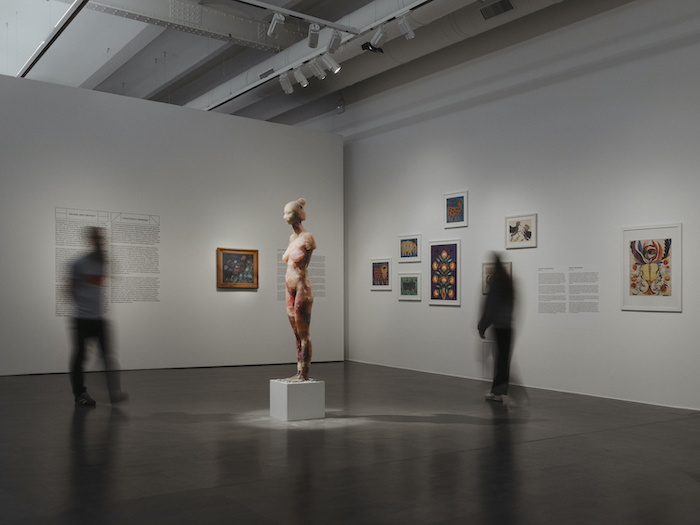
‘Kaleidoscope of (Hi)stories. Ukrainian Art 1912–2023,’ installation view // Courtesy Staatliche Kunstsammlungen Dresden, photo by Iona Dutz
Eva Szwarc: How did the exhibition at Albertinum first come about?
Maria Isserlis: It was clear for us that we needed to do a big project because the German public knows very little about Ukrainian arts and culture. The idea was to create a show that can grasp a longer period of time than just the 21st century. Our goals were to tell the stories that were never told here and to bring awareness to Ukrainian culture. But also, of course, safeguarding played another big role in our preparation: we thought if we bring important artworks outside of Ukraine, they’re also not in danger while on show in Europe. It’s a double role. So this was another important part, in collaboration with Ukrainian museums, because they were very clear they will only give the works as loans if they’re on display. The exhibition was co-curated with Tatiana Kochubinska; it was crucial to have a Ukrainian curator who has been working in this context for longer than the last ten years. Together, we developed the concept and worked directly with the collections in Ukraine.
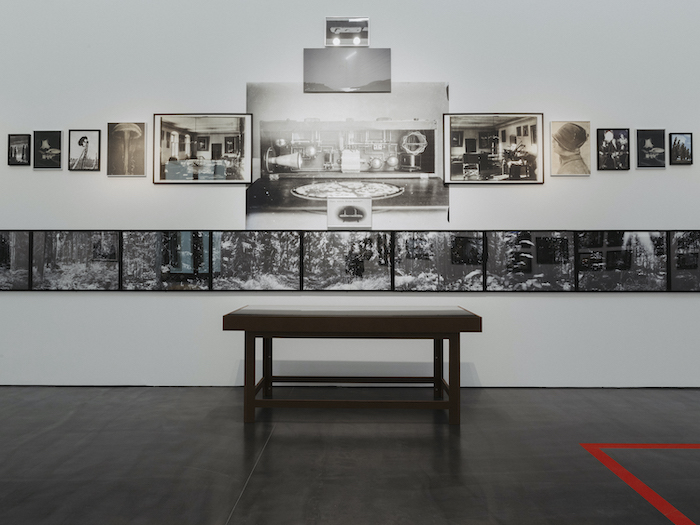
‘Kaleidoscope of (Hi)stories. Ukrainian Art 1912–2023,’ installation view // Courtesy Staatliche Kunstsammlungen Dresden, photo by Iona Dutz
ES: And, roughly, how many of the works are from collections already in Europe and how many were brought from Ukraine for the exhibition specifically?
MI: Around 90% are coming from Ukraine. We also had several new commissions, which were partly coming from Ukraine and were partly produced in Europe. One of them is ‘The possessed can witness in court III’ (2023) by Nikita Kadan, a very important installation working with the museum collections from Ukraine and from Europe, which he brought together in dialogue with each other. He’s dealing with the uncomfortable past, uncomfortable art, which has sometimes gotten locked up and forgotten because people didn’t want to bring it to the surface, due to its complicated narrative. He’s exploring another way of working with the collections—how to work with our past, how to bring them into the conversation without glorifying something.
We also have a new commission by Masha Reva, a younger artist from Odessa who’s based in Kyiv. She painted an amazing new painting for this exhibition. She was working while under siege in Kyiv, under all these rockets falling. And it’s one of the happiest pieces I have ever seen. It really makes you feel good. This painting was created to show another space, which you need to create during these horrible times to keep your sanity. And it brings joy. It’s amazing how she was capable of creating something like that. And we are also very lucky that we were able to transport it from Kyiv safely.
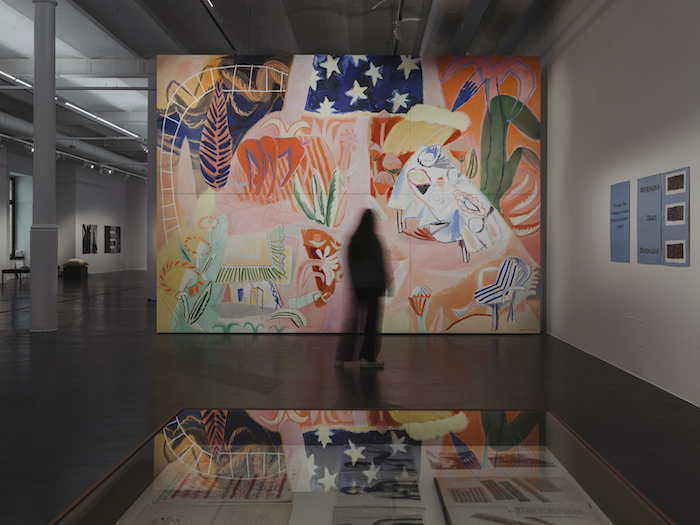
‘Kaleidoscope of (Hi)stories. Ukrainian Art 1912–2023,’ installation view // Courtesy Staatliche Kunstsammlungen Dresden, photo by Iona Dutz
ES: Joy is part of such a comprehensive exhibition on show, and pride, as well. And there is this sense of loss at the same time.
MI: Definitely. That was also part of the process and some of the decisions to show certain positions, like that of Maria Prymachenko. The museum of her work, on the second day of the full scale invasion, was burnt down and a lot of works were lost. In 1937, she was representing the Soviet Union in the world exhibition in Paris. But then she was completely forgotten, and especially here in Europe. And this is what we’re trying to do with this exhibition, to build the bridges and show how close the interaction and collaborations were between Ukrainian and European artists. A lot of avant-garde and modernist publications in the 1920s were in Italian and Ukrainian, or in German and Ukrainian, and not in Russian. It’s such a shame that all those connections were kind of forgotten and lost. They were, of course, partly destroyed, partly locked up. And this is exactly what’s continuing right now with this full scale invasion.
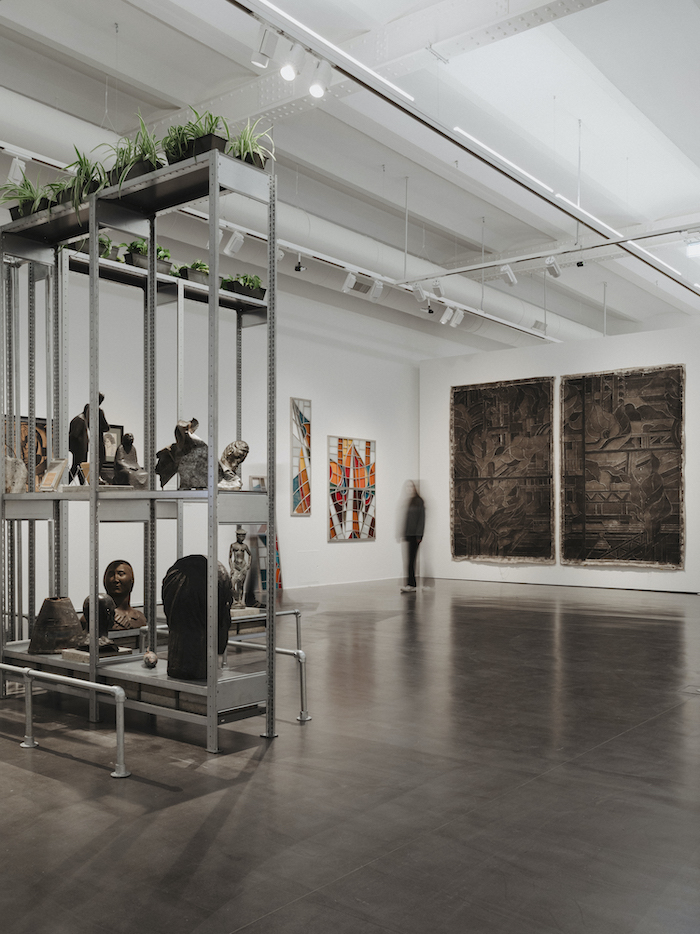
‘Kaleidoscope of (Hi)stories. Ukrainian Art 1912–2023,’ installation view // Courtesy Staatliche Kunstsammlungen Dresden, photo by Iona Dutz
ES: The exhibition is split into four chapters: ‘Practices of Resistance,’ ‘Culture of Memory,’ ‘Spaces of Freedom’ and ‘Thoughts about the Future.’ How did you develop this approach and the chapter titles?
MI: The exhibition space doesn’t have rooms; it’s a very long, big space. We wanted to create a journey through the whole show in a way that isn’t didactic and to see which works function in conversation with each other. How can we imagine Ukrainian art of the 21st century? Which topics are present in a lot of the works? Through this questioning we created the four topics. One is ‘Practices of Resistance’ because, of course, resistance is a really important topic for Ukrainian culture throughout the years. But we wanted to show not just physical resistance, but also artistic resistance. That’s why we have the work ‘Palianytsa’ (2022) by Zhanna Kadyrova, for example, who artistically generates support for the Ukrainian army and grassroots organisations because she sells her artwork, which itself is directly connected with this invasion.
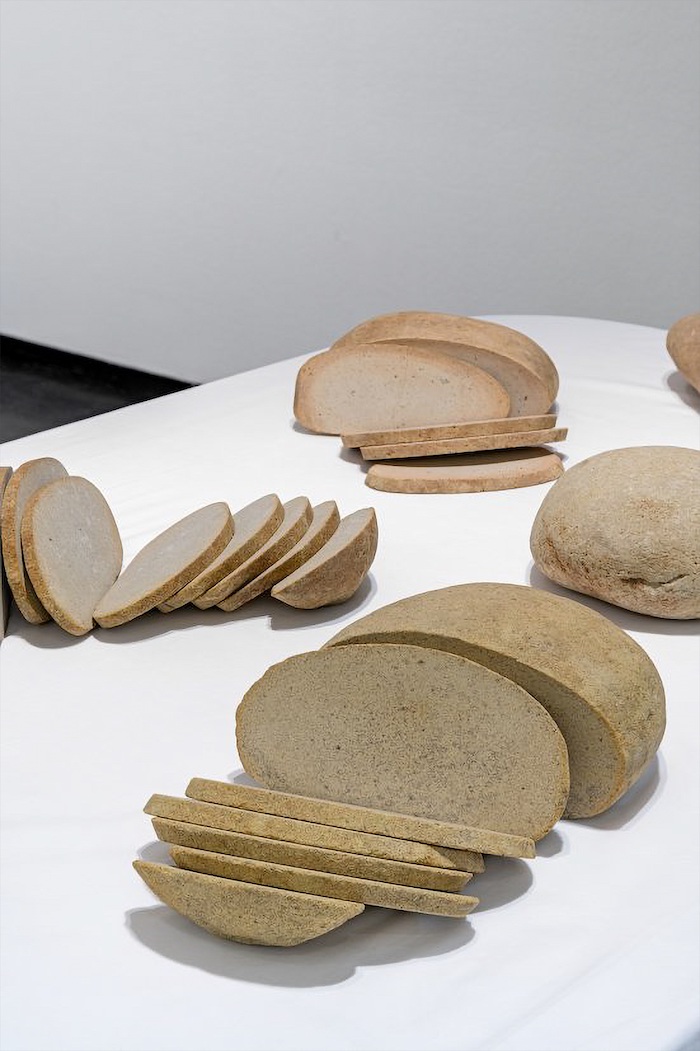
Zhanna Kadyrova: ‘Palianytsia,’ 2022 // Courtesy Zhanna Kadyrova
ES: How do you think your curatorial approach has changed since the outbreak of war?
MI: Before I considered myself an international curator. Suddenly, I became a Ukrainian curator. And, of course, right now, from the curatorial perspective, it’s hard to deal with other topics. It’s really hard to work on something else. Ideally, I would love to make a start already on the second part to this show, a show about one Ukrainian position and one European position without the national attributes in a dialogue with each other, more embedded into the European art history. But it’s step by step. And I do feel that I have a lot of interest in this because it’s the only way I feel I can actually help. That is my role within this situation.
Exhibition Info
Albertinum
Group Show: ‘Kaleidoscope of (Hi)stories. Ukrainian Art 1912–2023’
Exhibition: May 6–Sept. 10, 2023
Admission: € 12 (reduced € 9)
albertinum.skd.museum
Tzschirnerplatz 2, 01067 Dresden, click here for map






















